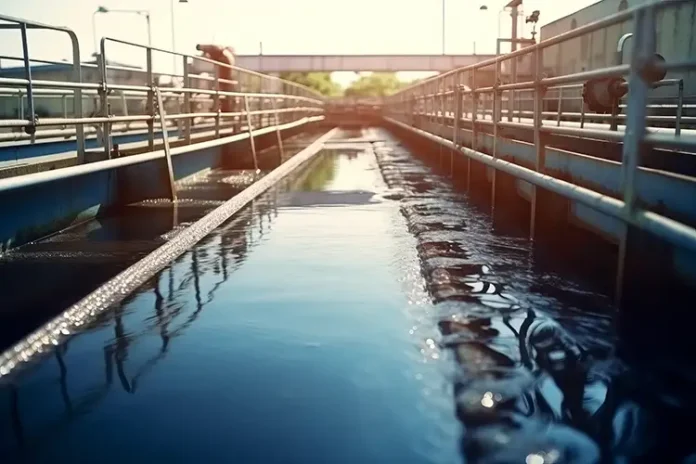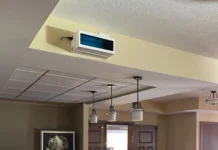Castine A. Bernardy Ph.D. Candidate, Civil and Environmental Engineering, University of New Hampshire
James P. Malley Jr., Ph.D. Professor of Civil and Environmental Engineering, University of New Hampshire
WEFTEC23: September 2023
The 96th Annual WEFTEC – Technical Exhibition & Conference will occur September 30 to October 4, 2023, in Chicago, Illinois, and has the following UV-related presentations on the program:
UV Disinfection: Where Are We? Where Are We Going? Wastewater UV disinfection systems have long been dominated by conventional mercury-based lamp systems. LED-based UV systems have the potential to reduce life-cycle costs and eliminate the use of mercury in lamps. This session presents a case study on a conventional low-pressure UV system, a comparison of UV-C LED-based and low-pressure mercury lamp systems, and a pilot test using dual-wavelength UV-C LEDs on wastewater. Speakers: Anthony Pimentel, Black & Veatch; Matt Hross, Hazen and Sawyer; Yoontaek Oh, Pegasus Technical Services, Inc.; John Crawford, Beca; Benjamin Levin, Hazen and Sawyer; Jay Swift, Gray and Osborne
During the “Disinfection in the 2020’s” Operator Session, there is a talk on Operating Aspects of UV with Seasonal Disinfection and Industrial Discharges. In this session, operators speak about issues associated with operating and maintaining disinfection processes while dealing with supply chain issues, staff turnover, increasing budgets and implementing new technologies. Operations staff from three wastewater facilities will present their specific issues, each using a different disinfection process (Hypochlorite, UV and PAA). A facilitated discussion on the challenges of operating disinfection systems follows the presentations. Speakers: John Crawford, Beca; Josh Goldman, MWRD; Gary Hunter, Black and Veatch; Edward Leaverton, St. Joseph, MO Wastewater; David Wilman, Columbia Metro Wastewater; Melissa Engle, Columbia Metro Wastewater; and Rebecca McIntosh
An interesting session is planned on Novel Applications of QMRA For Sizing Wastewater UV Systems and Identifying Shellfish Harvesting Zones. Presentations will explore the benefits of Quantitative Microbial Risk Assessment (QMRA) to support public health in surface waters receiving treated wastewater. Case studies are presented from New Zealand, which was one of the pioneers of the use of QMRA to determine site-specific UV dose requirements based on microbial risk as opposed to a standard UV dose requirement. Case studies also are presented using QMRA to identify and manage public health risk in shellfish aquaculture and wild shellfish harvesting downstream of discharges from WRFs using chlorine or UV disinfection and various secondary treatment processes. Speakers: John Crawford, Beca; Kyle Curtis, HRSD; Kayson Smith-Bejgrowicz, Carollo Engineers; and Melanie Mann, Hazen and Sawyer
AWWA-WQTC23: November 2023
Interesting sessions on UV- and One Water-related work are planned for the AWWA Water Quality and Technology Conference (WQTC23), which will occur November 5-9, 2023, in Dallas, Texas, during sessions MON03 and MON09.
Biofilm Control in Water Supply Systems Using UV-C Devices. Emerging UV technologies, such as UV LED and KrCl* excimer, could be a unique solution for biofilm control in water supply systems with no chemical use and low-energy consumption. In this research, the inactivation efficiencies of Pseudomonas aeruginosa biofilms were determined using five UV-C devices with emission wavelengths of 222 to 282 nm. The results showed that although biofilm constituents protected biofilm-bound cells through physical shielding against UV irradiation, UV-C devices still achieved up to 1.5 to 2.5 log reduction of the biofilm-bound cells across emission wavelengths, which could lead to an innovative approach for biofilm control in water supply systems. Authors: Ben Ma, Christian Ley, Saba Seyedi, Emma Wells, Karl Linden, University of Colorado at Boulder
Low-Irradiance UV Distribution by Waveguides Can Prevent Biofilm Formation in Water Treatment and Distribution Channels. Biofouling is a significant problem to drinking water distribution networks and treatment technologies, creating operational, functional and financial hurdles. This presentation will discuss how low-irradiance UV light can be distributed through challenging spaces to decrease biofilm formation. The authors will present new data on low-irradiance inactivation kinetics and discuss novel UV waveguide technologies that can be used to deliver low-irradiance UV light into enclosed channels. The presentation will end by highlighting the impact that low-irradiance UV light distribution can have on water quality and treatment innovation. Authors: Mariana Lopes, Muhammad Salman Mohsin, Katrina Fitzpatrick, University of Massachusetts at Amherst
Ultraviolet Disinfection and Gene Damage of Nontuberculous Mycobacteria Species and Morphotypes by Different Wavelengths. This presentation will focus on the investigation of the treatment efficiency of various Ultraviolet (UV) wavelengths on different species and morphotypes of waterborne opportunistic pathogens known as Nontuberculous mycobacteria (NTM). The study will examine the effects of two specific wavelengths (222 nm emitted by a KrCl excimer lamp and 254 nm emitted by a low-pressure Hg lamp) on inactivating and damaging genes of NTM in wastewater and drinking water. The results of this research will provide valuable mechanistic insights at both the cellular and molecular levels, allowing for the development of effective strategies to minimize the risks of NTM-related health challenges. Authors: Yijing Liu, Natalie Hull, Ohio State University
Full-Scale Evaluation of UV-LED and Low-Pressure UV for Inactivation of Legionella in Groundwater. UV-LED and low-pressure UV were evaluated for inactivating Legionella in groundwater. Bench-scale (collimated beam) and full-scale (1,000 to 3,200 GPM) tests at LVVWD groundwater wells were conducted. The full-scale UV-LED reactor in this study is the first full-scale reactor used for municipal application in the Americas. Practical advantages, disadvantages, challenges and successes during full-scale implementation of the two UV systems at groundwater wells will be discussed. Results of the performance tests, including Legionella inactivation results, will be presented. Authors: Ariel Atkinson, Eric Wert, Southern Nevada Water Authority
Experimental and Ray-Tracing Model Simulates Chemical Actinometry and Radiometric Measurements for UV-C Side-Emitting Optical Fibers. Biofilm formation on surfaces exposed to air or water can be mitigated using germicidal ultraviolet light (UV-C). While both UV-C lamps and Light Emitting Diodes (LEDs) can be excellent sources of <300 nm irradiation, it is difficult to directly irradiate surfaces in curved piping, around physical obstacles or in narrow channels. One method for light application on these complex surfaces is to launch light from a UV-C Light Emitting Diodes into thin (= 0.5 mm) and flexible Side-Emitting Optical Fibers (SEOFs), which can be placed directly on the surface. This presentation develops ray-tracing models and demonstrates validation of SEOFs for UV-C dosimetry that can control biofilms. Authors: Paul Westerhoff, N.D. Shapiro, Zhe Zhao, Arizona State University
UV 222 nm Emission from KrCl* Excimer Lamps Greatly Improves Advanced Oxidation Performance in Water Treatment. KrCl* excimer lamps emitting at 222 nm hold potential for enhancing UV-based advanced oxidation efficiency. Experiments were conducted comparing low-pressure UV (LPUV) and KrCl* excimer lamps, with radical promoters hydrogen peroxide (H2O2) and nitrate (NO3). Compared to conventional LPUV/H2O2, the steady-state hydroxyl radical (•OH) concentration achieved in the KrCl*/NO3 UV/AOP was up to 13.1 times greater, while the KrCl*/H2O2 process was up to 9.4 times greater, in ultrapure water; in groundwater, these numbers were 7.3 and 3.7 times greater, respectively. Several research gaps must be addressed, including a need for direct photolysis quantum yields at 222 nm for contaminants of concern and understanding the formation of any byproducts. Authors: Karl Linden, Emma Payne, Bryan Liu, University of Colorado at Boulder
Byproduct Formation During UV/Chlorine Advanced Oxidation for Potable Reuse and Drinking Water Treatment. This is a presentation of the results of a multi-year investigation into conventional and emerging disinfection byproducts, in vitro toxicity and transformation products resulting from UV/chlorine advanced oxidation treatment of potable reuse and drinking waters at full- and bench-scale. The bench-scale studies were performed to compare UV/chlorine byproducts and toxicity to those produced by UV/hydrogen peroxide and chlorine or UV alone. Authors: Ronald Hofmann, Nathan Moore, Katie Vanyo, Erin Mackey, Hui Peng, Susan Andrews, University of Toronto






